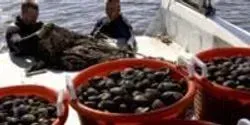Food & Beverage

In KPMG’S 2014 Food, Drink and Consumer Goods Industry Outlook Survey, 22 percent of the senior managers questioned said that “staying ahead of or navigating changes in the regulatory environment” would consume most of their time in the coming 12 months. Nearly 20 percent said that geographic expansion would be one of the primary areas of investment in the coming months. Taken together, these two data points echo a common food industry refrain: we want to expand internationally, but we’re increasingly aware of the difficulties and costs of doing so from a regulatory standpoint.

Few Ontarians eat enough dark green and yellow vegetables despite their nutritional benefits, according to a University of Guelph study.

Nearly half of foodborne illnesses in the U.S. from 1998 through 2008 have been attributed to contaminated fresh produce. Prevention and control of bacterial contamination on fresh produce is critical to ensure food safety. The current strategy remains industrial washing of the product in water containing chlorine. However, due to sanitizer ineffectiveness there is an urgent need to identify alternative antimicrobials, particularly those of natural origin, for the produce industry.

Combining chromosomes from different organisms started as soon as someone created a hybrid. “In natural breeding,” says geneticist Kulvinder S. Gill of Washington State University in Pullman, “we transfer genes through hybridization—transferring pollen from one plant to another.” He adds, “It can, for example, be pollen from wheat to rye or rye to wheat.”

The newly renovated Lasher Laboratory avian diagnostic, disease and research facility was the focus as community members attended an open house held Friday, April 17, at the University of Delaware’s Elbert N. and Ann V. Carvel Research and Education Center in Georgetown, Delaware.

A sampling of more than 1,000 Gulf of Mexico fish, shrimp, oysters and blue crabs taken from Cedar Key, Fla., to Mobile Bay, Ala., between 2011 to 2013, shows no elevated contaminant levels, according to a seafood safety study conducted by Dr. Andrew Kane and colleagues at the University of Florida. In fact, some 74 percent of the seafood tested showed no quantifiable levels of oil contaminants at all.

Have a thirst for crafting the perfect beer? University of the Sciences is ready to turn a passion for brewing into an exciting, highly rewarding career through the mid-Atlantic region’s first Brewing Science Certificate.

University of Adelaide researchers have shown there are two critical windows during the developmental pathway to adulthood when exposure to junk food is most harmful, particularly for female offspring.

Up to 8 percent of people in the U.S. suffer from post-traumatic stress disorder (PTSD) as the result of witnessing or being the victim of a traumatic event. People with PTSD have been in a situation in which they were at risk of death, serious injury or sexual violence or have seen first-hand loved ones face such threats. They may experience flashbacks, emotional detachment and jumpiness, among other symptoms that affect their ability to function in everyday life.












